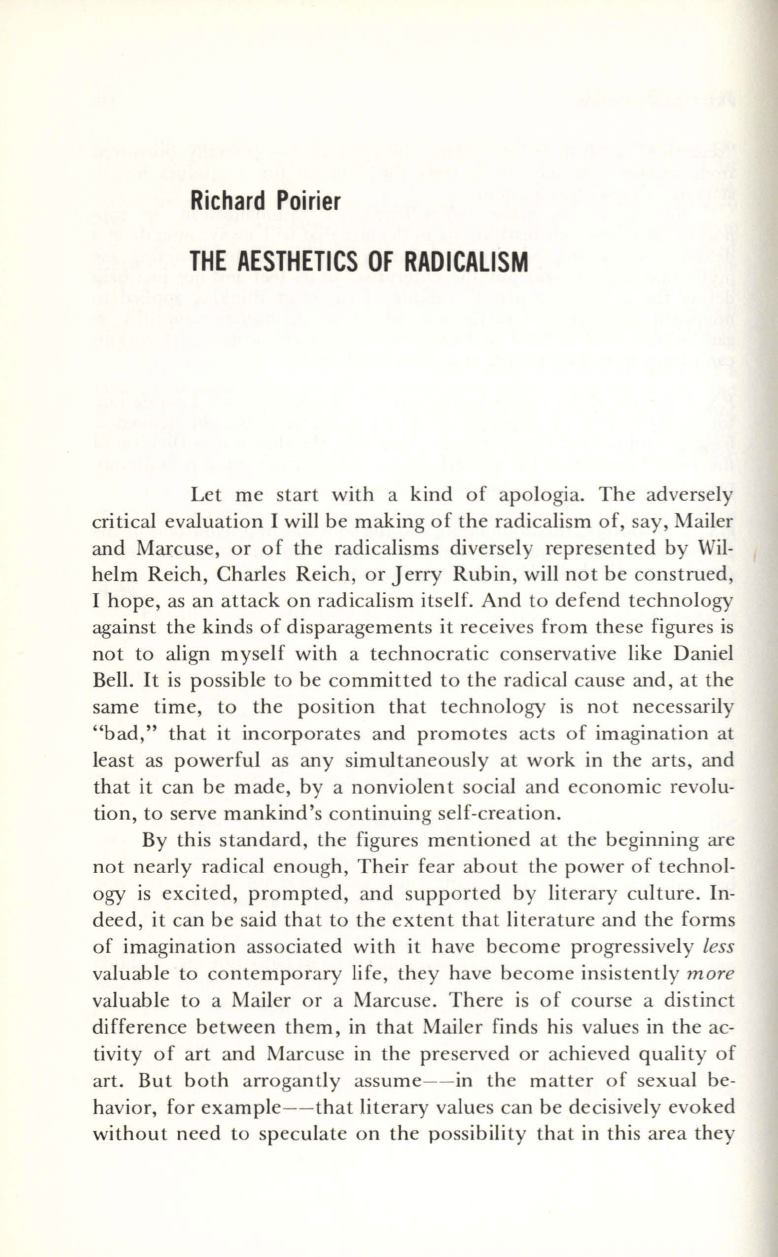
Richard Poirier
THE AESTHETICS OF RADICALISM
Let me start with a kind of apologia. The adversely
critical evaluation I will be making of the radicalism of, say, Mailer
and Marcuse, or of the radicalisms diversely represented by Wil–
helm Reich, Charles Reich, or Jerry Rubin, will not be construed,
I hope, as an attack on radicalism itself. And to defend technology
against the kinds of disparagements it receives from these figures is
not to align myself with a technocratic conservative like Daniel
Bell. It is possible to be committed to the radical cause and, at the
same time, to the position that technology is not necessarily
"bad," that it incorporates and promotes acts of imagination at
least as powerful as any simultaneously at work in the arts, and
that it can be made, by a nonviolen t social and economic revolu–
tion, to serve mankind's continuing self-creation.
By this standard, the figures mentioned at the beginning are
not nearly radical enough, Their fear about the power of technol–
ogy is excited, prompted, and supported by literary culture. In–
deed, it can be said that to the extent that Ii teraiure and the forms
of imagination associated with it have become progressively
less
valuable to contemporary Ii fe, they have become insistently
more
valuable to a Mailer or a Marcuse. There is of course a distinct
difference between them, in that Mailer finds his values in the ac–
tivity of art and Marcuse in the preserved or achieved quality of
art. But both arrogantly assume--in the matter of sexual be–
havior, for example--that literary values can be decisively evoked
without need to speculate on the possibility that in this area they


